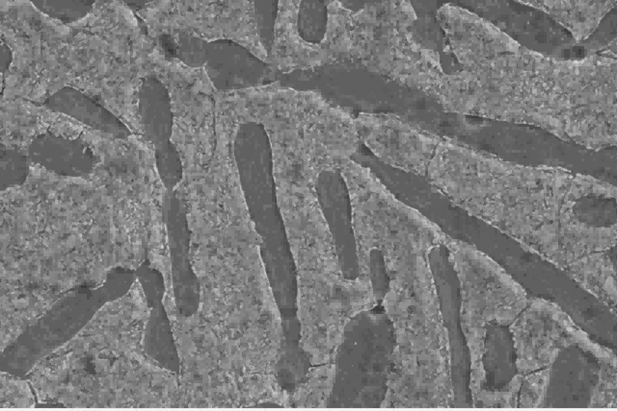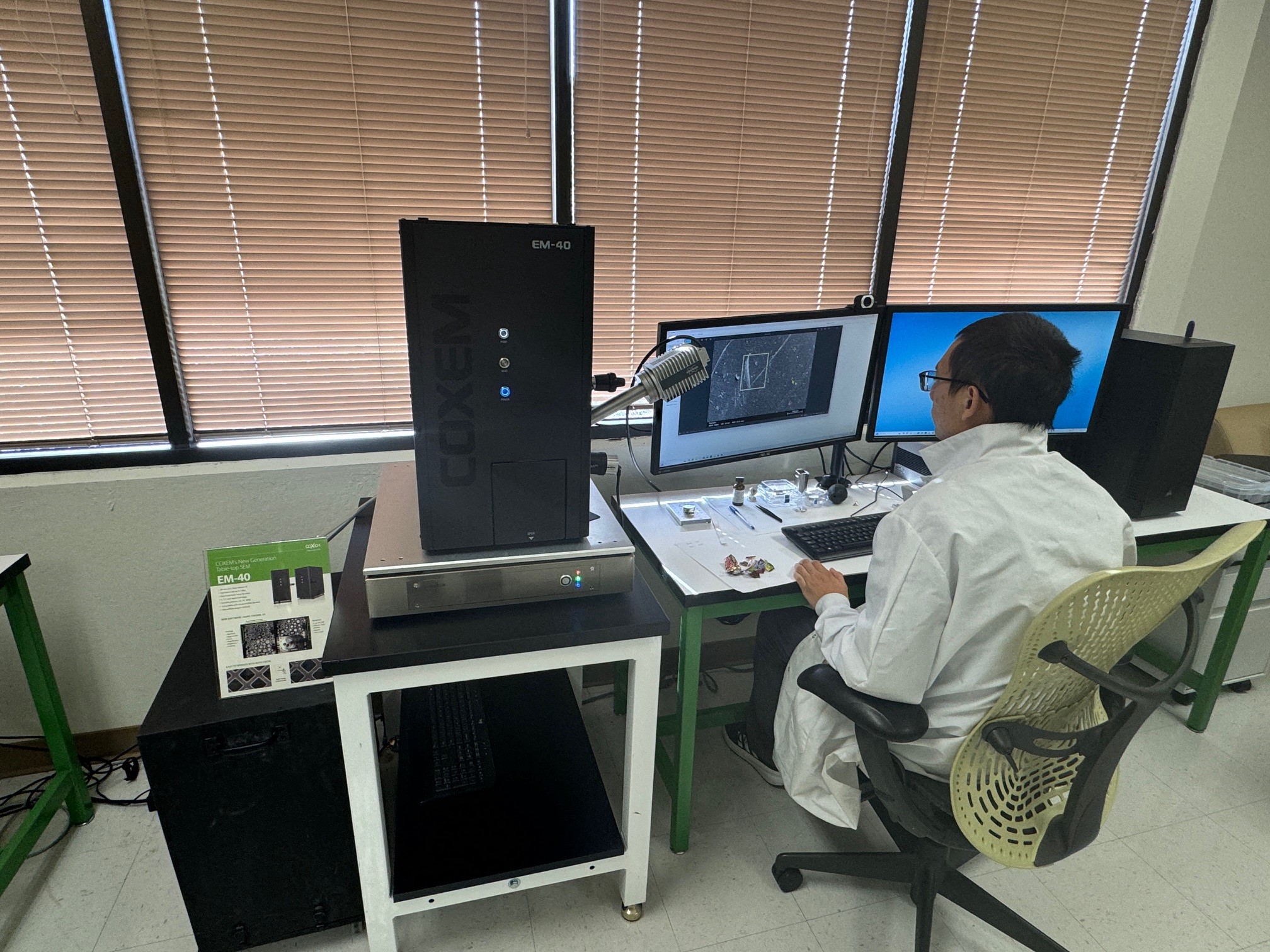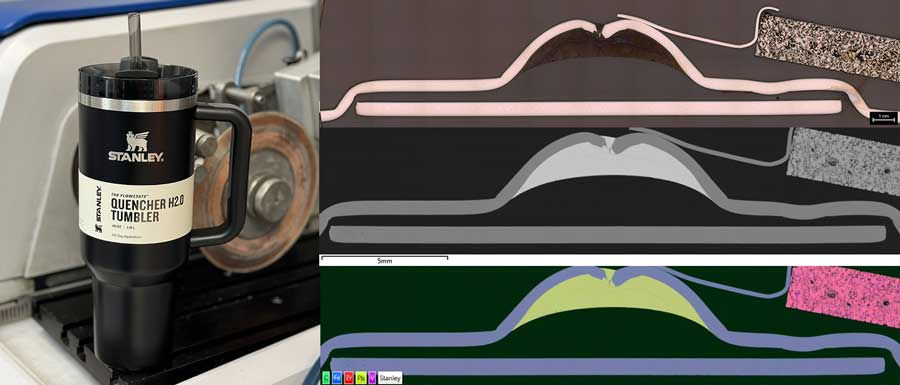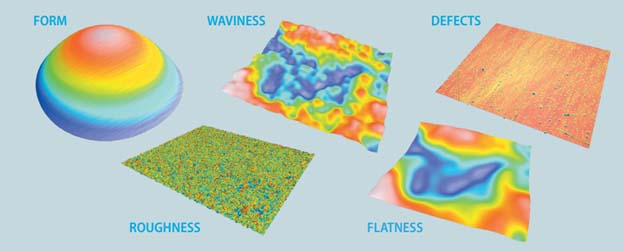Do you wonder what makes up your windshield?
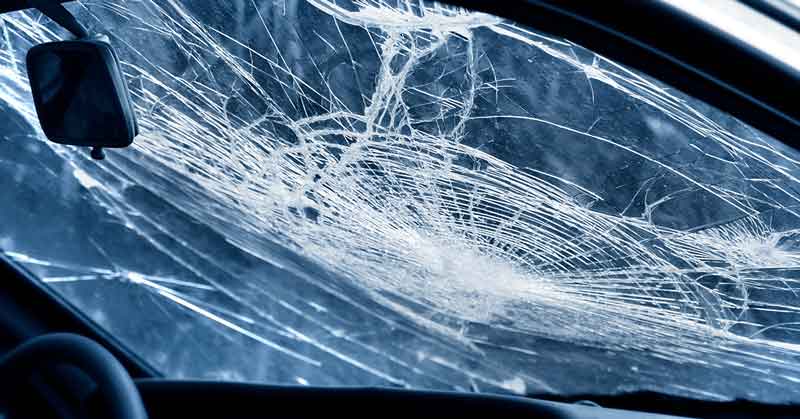
Observing road accidents this holiday season made us want to analyze the materials that make up automotive windshields. We know windshields protect us from the usual flying debris of the daily drive, but manufacturers also construct them to keep us safe in case of an accident. To provide the necessary safety, manufacturers make windshields with laminated safety glass. Laminated safety glass is made from at least two layers of glass that sandwich a plastic polymer. The polymers give the windshield the structure to prevent the windshield from splintering and causing harm to the passengers when shattered. Standard pane glass will break into sharp shards of glass, but safety glass will shatter into many small pieces that stay attached to keep the windshield whole and display a “spider web” cracking.
The polymer layers also greatly help in preventing penetration by foreign objects. Laminated safety glass was first invented in 1903 and was widely implemented in automobiles by the late 1930s.
Newer windshields may have small wire arrays sandwiched in the polymer to generate heat and prevent icing. In addition, the number of sensors in cars is increasing, including those embedded sensing devices embedded in windshields.
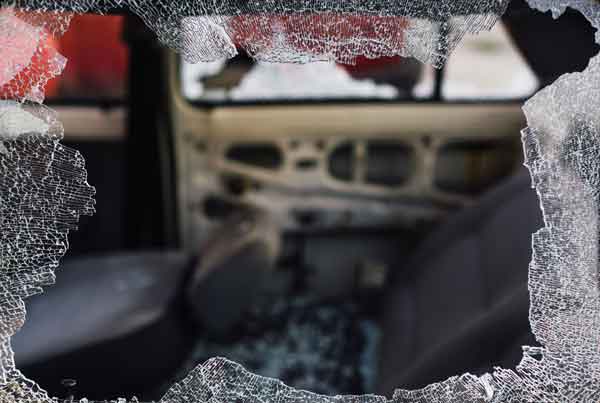
The glass used for the sides of the car (doors, etc.) is constructed similarly but is typically thinner and has a thinner polymer layer since the protection against foreign objects is not as critical. This glass does not need to stay together and will shatter into hundreds of pieces.
To show how manufacturers construct a windshield, we went to our local junkyard and took a sample from a junked car. We then cut and polished two areas of a windshield. One section was still relatively intact, and the other section was severely damaged.
We selected both an intact area of the glass and a damaged area. We mounted the undamaged sample in a standard sample “puck .” The blue/green color is due to the tint of the glass. We mounted the damaged area in a custom holder for delicate or odd-shaped samples. We used brown epoxy to hold everything together for proper polishing.
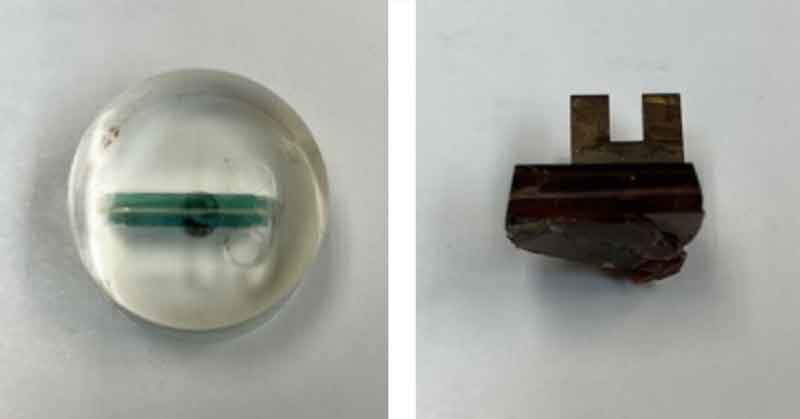
LEARN: How To Choose The Correct Mounting Method And Epoxy For Your Samples
Below are higher magnification images of the intact section of the windshield after polishing. We took these images using a Leica DVM6M digital microscope. The images show the intact area with darkfield (left) and bright-field (right) illumination. You can see that there are five layers of material. The two outside layers are glass, with two additional layers of a polymer in between, plus a different polymer in the center. The polymer layers consist of two layers of harder polymeric material, one on each side of a very soft polymer.
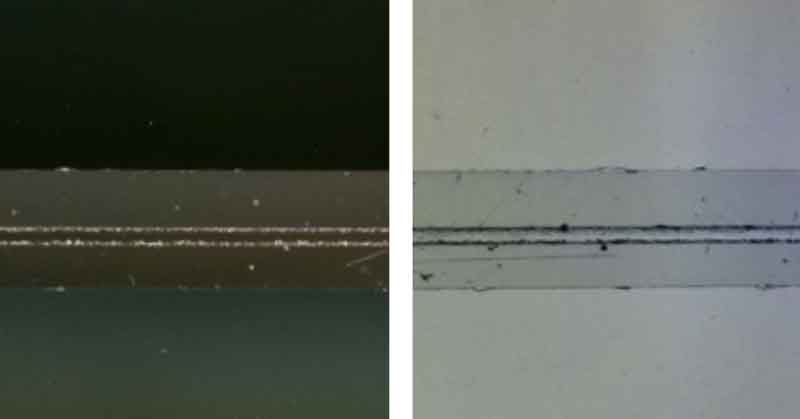
Below are images from the damaged area that show the plastic inner layers deformed after the accident. We took these images with darkfield illumination at different locations on the sample. You can see the shattered glass layers and the deformation of the polymer layers. The windshield shattered but stayed together. It is difficult to rip apart a broken windshield since the combination of polymer layers holds the windshield together.
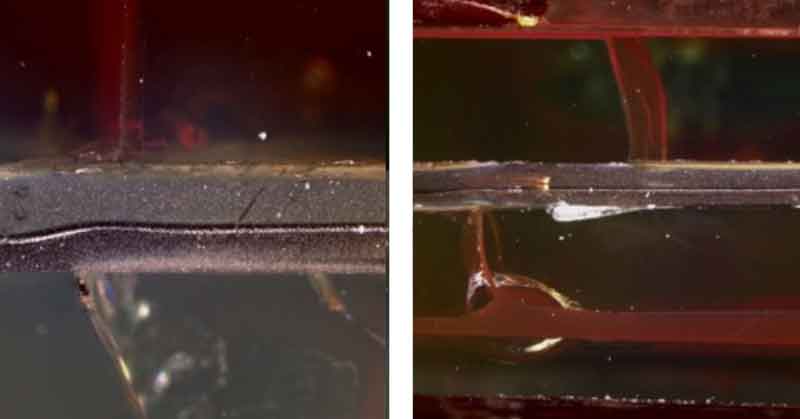
Need help with your lab application?
Complete the form on this page or contact us.

